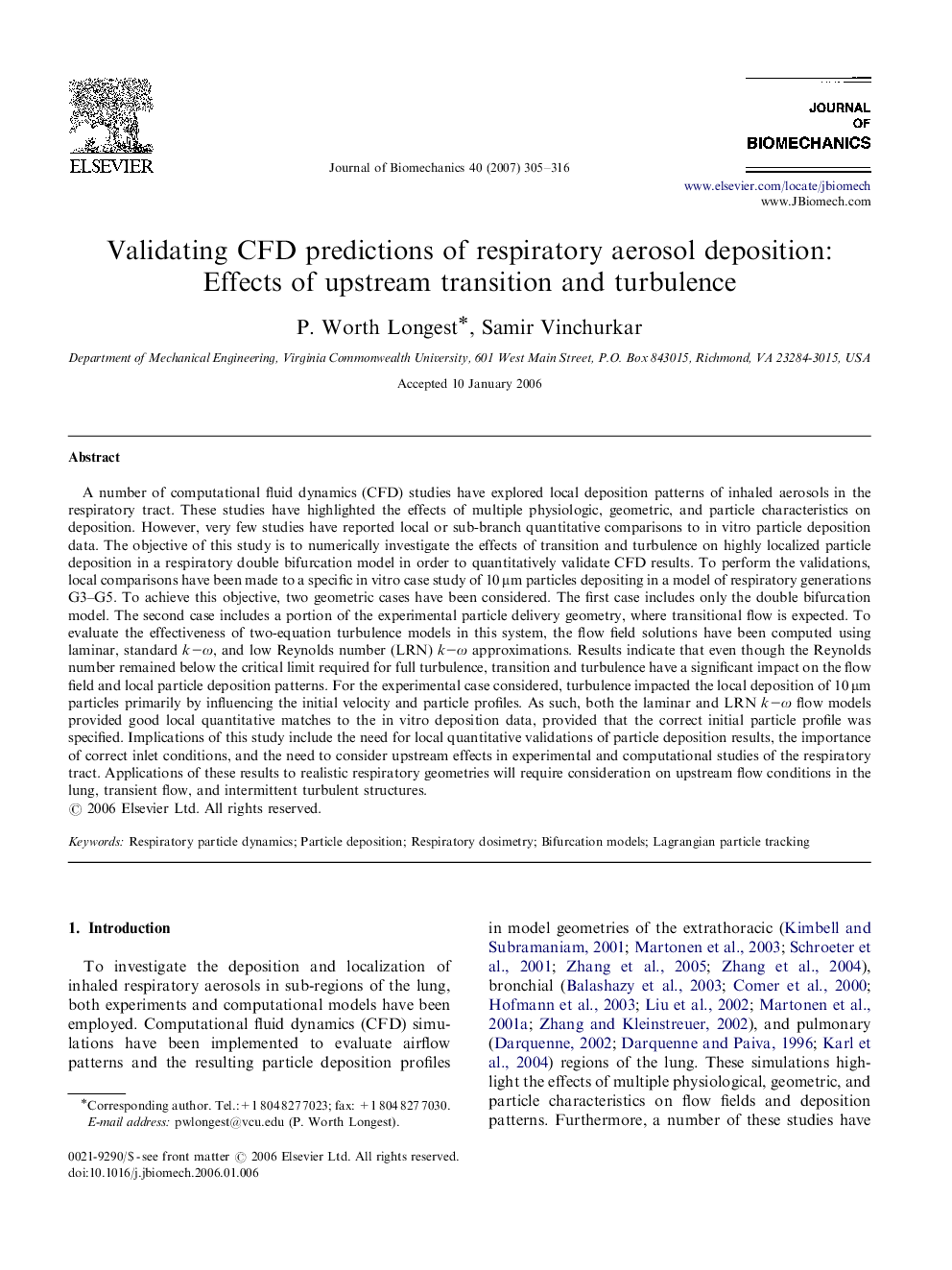| کد مقاله | کد نشریه | سال انتشار | مقاله انگلیسی | نسخه تمام متن |
|---|---|---|---|---|
| 874800 | 910350 | 2007 | 12 صفحه PDF | دانلود رایگان |

A number of computational fluid dynamics (CFD) studies have explored local deposition patterns of inhaled aerosols in the respiratory tract. These studies have highlighted the effects of multiple physiologic, geometric, and particle characteristics on deposition. However, very few studies have reported local or sub-branch quantitative comparisons to in vitro particle deposition data. The objective of this study is to numerically investigate the effects of transition and turbulence on highly localized particle deposition in a respiratory double bifurcation model in order to quantitatively validate CFD results. To perform the validations, local comparisons have been made to a specific in vitro case study of 10 μm particles depositing in a model of respiratory generations G3–G5. To achieve this objective, two geometric cases have been considered. The first case includes only the double bifurcation model. The second case includes a portion of the experimental particle delivery geometry, where transitional flow is expected. To evaluate the effectiveness of two-equation turbulence models in this system, the flow field solutions have been computed using laminar, standard k–ωk–ω, and low Reynolds number (LRN) k–ωk–ω approximations. Results indicate that even though the Reynolds number remained below the critical limit required for full turbulence, transition and turbulence have a significant impact on the flow field and local particle deposition patterns. For the experimental case considered, turbulence impacted the local deposition of 10 μm particles primarily by influencing the initial velocity and particle profiles. As such, both the laminar and LRN k–ωk–ω flow models provided good local quantitative matches to the in vitro deposition data, provided that the correct initial particle profile was specified. Implications of this study include the need for local quantitative validations of particle deposition results, the importance of correct inlet conditions, and the need to consider upstream effects in experimental and computational studies of the respiratory tract. Applications of these results to realistic respiratory geometries will require consideration on upstream flow conditions in the lung, transient flow, and intermittent turbulent structures.
Journal: Journal of Biomechanics - Volume 40, Issue 2, 2007, Pages 305–316